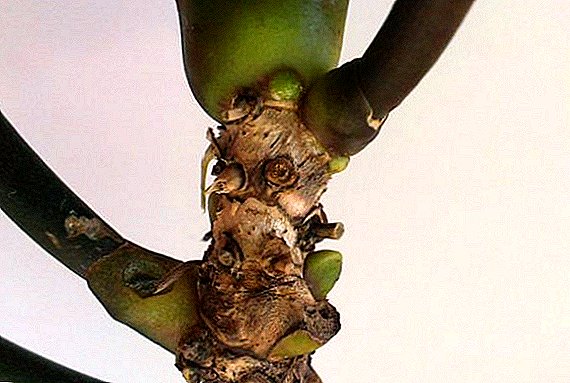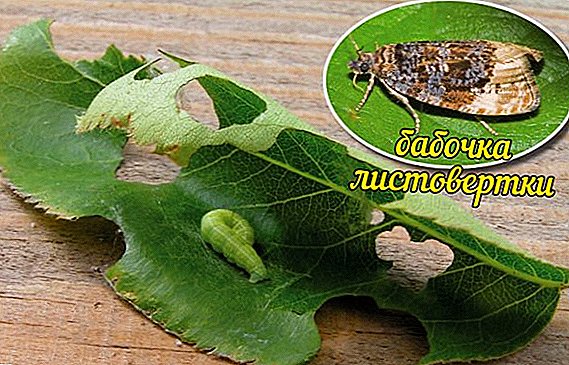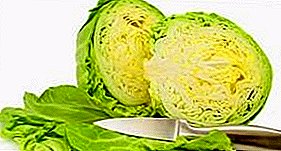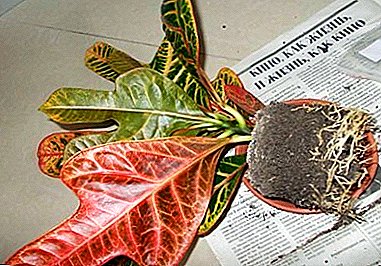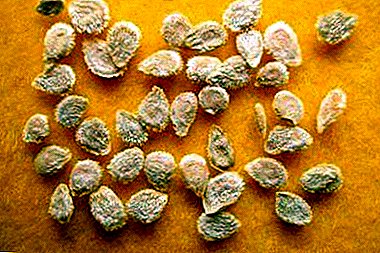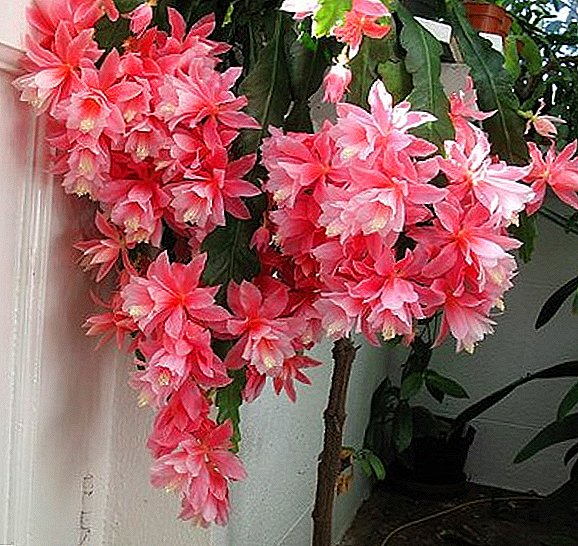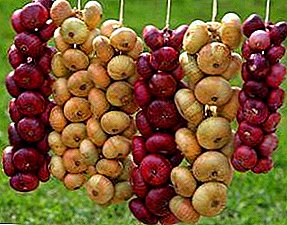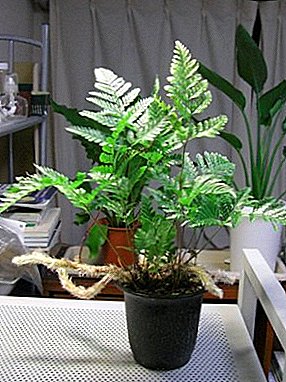
The name Davallia unites a whole genus of ferns. Most of its representatives grow in warm countries of Asiapreferring tropical climate.
In more northern regions, they can be grown in a greenhouse or greenhouse, where warm and humid.
Davallia belongs to the Davallyev family along with the fern Nephrolepis.
Kinds
Davallia Mariesa
Compact plant with thin rhizomes, not more than 22-26 cm in height. Resistant to cold a plant that is suitable for unheated greenhouses and winter gardens. The rhizomes are covered with a multitude of brick-colored scales. Leaves - fluffy, pale green.
Photo subspecies Davallia Mariesa:
Davallia canarian
The most famous species, popularly known as “hare's feet”, “squirrel legs”, “deer leg” due to densely rhizomes.
Growing up, they begin to crawl out of the pot, hanging over the edges. It has triangular leaves that are painted in different shades of green.
Photo subspecies Davallia Canary:
Davallia five leaf
A small fern suitable for growing in closed soil. It has thick rhizomes. chocolate colored, pubescent with fine dense hairs. The leaves are glossy, have a strong brilliance and deep green color.
Photo subspecies Davallia pyatilistnaya:
Davallia dense
Perennial from Australia, used as an ampelnaya or climbing plant. Very beautiful view with broad, three-pinnate leaves. Over time, the rhizome becomes woody, covered with thin scales.
Photo subspecies Davallia dense:
Davallia bubbly
Guest from the tropics of Asia, most often lives in China and Japan. Suitable for growing in conditions of constant humidity. Low compact fern with creeping rhizomes. The leaves are linear, three and four pinnate, painted in emerald hues.
Photos subspecies Davallia bubble:
Home care
Some species can be grown in the house. It is a truncated davalia, five-leaf, whisker, Canarian and slightly dissected. It must be remembered that all of them are epiphytic forms of ferns with creeping horizontal rhizomes.
Features care after purchase
Plant must be placed in complete isolation from other plants - "quarantine". During the month, regularly inspect it in time to detect the presence of infections and harmful insects.
The plant, acquired in a small pot, it is desirable to transplant in a container suitable for him in size.
Lighting
 Davallia fern prefers to dwell in shady places, hiding from the bright sun and its direct rays. In the house you need to create the same conditions, placing the plant in the shade or partial shade.
Davallia fern prefers to dwell in shady places, hiding from the bright sun and its direct rays. In the house you need to create the same conditions, placing the plant in the shade or partial shade.
You can put on the window sill of the north window, but in general the fern grows well away from any windows.
Temperature
Tropical guest is used to high temperatures, so tolerates even heat at 40 °. The content in winter does not differ from the summer, the temperature should not be below 18-19 °.
Watering
Frequent and abundant supply of moisture will ensure the normal growth and development of the fern, which in nature is always in wet soil.
The earth in a pot should never dry out! When watering and spraying use only soft water without impurities of lime and chlorine.
Air humidity
Davallia needs high humidity which can be provided with constant spraying of green mass. In addition, the pot is best put on a tray filled with any wet stones or near an open container full of water. When spraying and watering, be sure to ensure that the liquid does not fall into the middle of the outlet - this can cause rotting of the rhizomes and cuttings.
Top dressing
During active growing season, dallium is fed with mineral fertilizer complexes in order to replenish stocks of trace elements in a timely manner. It is enough to introduce fertilizers for ferns with an interval of 2-3 weeks.
Transfer
 The procedure is carried out in the spring, before the fern begins to develop intensively. Depending on the state of davallia You can repot every year or a year.
The procedure is carried out in the spring, before the fern begins to develop intensively. Depending on the state of davallia You can repot every year or a year.
If the plant has enough space in the pot, it is actively growing, releasing new fronds, and does not suffer from any diseases, you can postpone the transplant for next spring.
The soil for the epiphytic form must be very breathable, so the roots get plenty of oxygen. You can buy a special soil for ferns or mix the following components:
- peat -2 parts;
- leaf soil - 2 parts;
- fine sand - 1 part;
- crushed sphagnum (moss) - 1 part;
- sod soil, humus - 1 part.
For loosening and retaining moisture, many growers use vermiculite.
Capacity takes more than the previous one, but shallow - the roots of dahallyiah are located in the upper layer of soil, even in old plants. A layer of drainage is laid out on the bottom, the soil is filled up and the fern is placed on it, gently smoothing the rhizomes. Top sprinkled with a layer of soil and watered. If the land is heavily subsided, immediately fill it up again.
Pruning
Not required. Cut off only dried and problematic fronds.
Breeding
Disputes
They develop in the sporadic, after maturation are used for planting. They are placed in boxes filled with a mixture of peat and sand, Moisturize well and cover with glass to create a greenhouse effect. Germinated in a dark warm place.
Rhizomes
 A very simple way is to cut off part of the root and plant it in a separate container.
A very simple way is to cut off part of the root and plant it in a separate container.
Leaves
Cut off a healthy young leaf and place in a pot with loose soil, water more often. The first days can be covered with a polyethylene package.
Dividing bush
Quick and easy way. Separate the rhizome with green leaves from the adult plant and transplant in a separate container.
Diseases and problems
All troubles arise when improper care for the fern.
Errors in the content can cause irreversible consequences that will lead to the death of dalallia.
Flippers twist, fade and fall off when the plant is cold, it stands in a draft or watering is done with ice water.
The fronds turn yellow and dry with constantly dry air.
Leaves appear yellow or brown spots? So the aggressive sun still got the fern and left its marks.
The plant develops poorly, grows few leaves when it grows in dense, heavy soil.
Rhizomes rot with too frequent watering.
Pests
Juicy frond fern attract many pests. On davally you can find:
- whitefly - small bright butterflies whose larvae feed on plant sap;
- spider mites - microscopic parasites that entangle davallia with tiny spider webs;
- shchitovok - insects that look like numerous plaques on the leaves;
- aphid — small pests that form large colonies and feed on the victim’s sap;
- thrips - small flying bugs of a nondescript color;
- mealybugs - aphid with a long torso, as if sprinkled with flour.
Conclusion
Davallia is an unpretentious plant that even a beginner grower can grow.
The most important thing is to provide this fern with constant soil and air humidity.
Other indoor ferns include Pelley, Pteris, Cirtriumium, Asplenium, Adiantum, Nephrolepis, Blehnum, Salvinia, Polypodium, Platicerium, Uzzhnik and Grozdnik.


